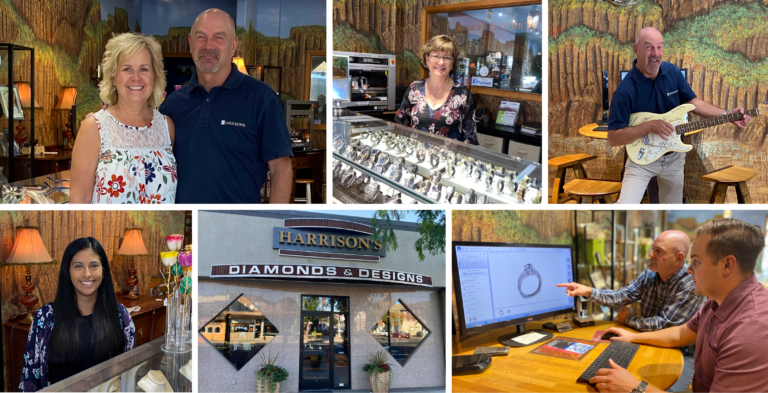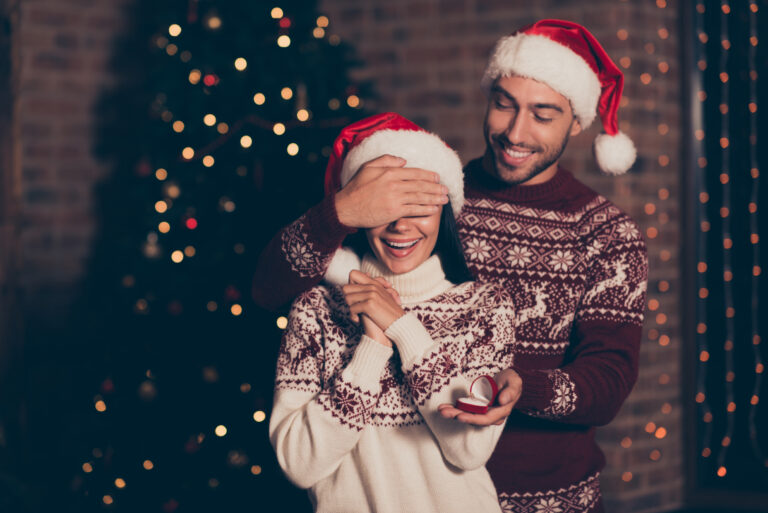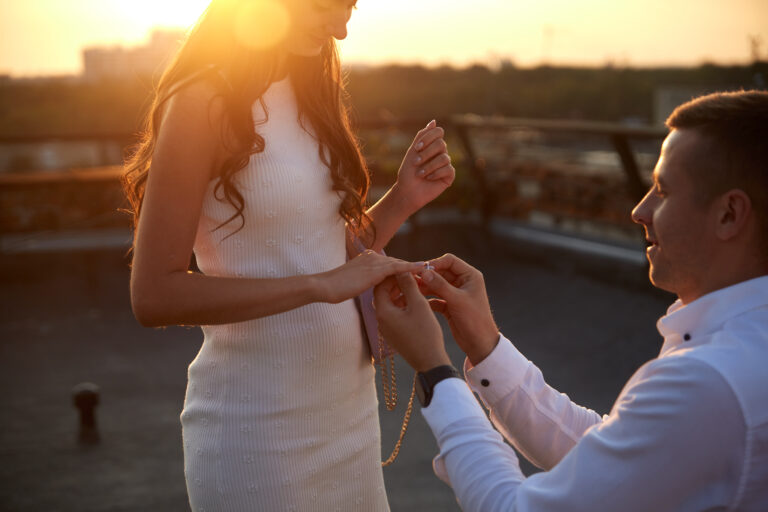
Is Your Diamond A “Fugazi”?
Is Your Diamond A “Fugazi”? If you trying to figure out if your diamond is real there are tons of at home tests listed all over the internet. Unfortunately we can’t recommend any of them because they are so arbitrary. There is one test listed below that works pretty well but it too is up for interpretation.
We will go through each one and tell you what we think. Keep in mind that we know diamonds and have been in this business for over 35 years.
1) Water Test-
This test is about 50/50 which pretty much puts you back at square one. We tried this test with fake and real diamonds and they both sank to the bottom. We honestly don’t know how or why someone would think this was a good test to try. Fake diamonds will sink in water unless they are bad fakes.
Here are the instructions if you must try it;
“-Fill a normal-sized drinking glass ¾ of the way with water.
-Carefully drop the loose stone into the glass.
-If the gemstone sinks, it’s a real diamond. If it floats underneath or at the surface of the water, you have a fake on your hands. A real diamond has high density, so the water test shows if your stone matches this level of density”.
2) Fog Test
For the fog test,
Your breath is more valuable than this test. How humid is it in the place where you are performing this test? What’s the temperature? How much time should it take for the “fog” to disappear? Yes, we tried this test and forgetaboutit..
Test away if you must the instructions are listed below.
-Hold the diamond or ring between two fingers and breath on it with a puff of air.
-A light fog will form on the diamond because of the moisture and heat in your breath.
-If the fog dissipates right away, the diamond is real. If it takes several seconds for the fog to disperse, it is likely a fake diamond.”
3) Check Setting & Mount
Ok so let’s talk about precious metals vs. Diamonds. Does anybody know which is more valuable? Yes, you are right, diamonds are far more valuable than the setting they are in. If someone was to fake a diamond and try to sell it, what do you think they would do? Well, we can tell you from firsthand experience that just because you have a “diamond” in a nice setting doesn’t mean it’s real.
Forgers and counterfeiters will put a fake stone in gold or better yet stamped fake gold and try to fool people. We wish internet experts would think things through before they come up with an article about how to test your diamonds. The following logic tells you that if the stone is in a nice setting then it’s real.
Read Below-
“-Check the setting & mount: If it’s a high-quality setting (white gold, platinum, yellow gold, pave or side-stone setting, and halo setting rings), then it’s likely that the diamond is real.
-Look for markings inside the ring’s center: The notes 10K, 14K, and 18K indicate the type of gold used. The markings PT and Plat refer to platinum. If you see a number such as 585, 770, 900, 950 those are markings indicating platinum or gold. If you see a “C.Z.” stamp or engraving, the gemstone is not a real diamond.”
4) The Heat Test
We laughed out loud at this one and pictured an ER visit or a house fire as a result. This is a terrible idea so please unless you are well versed in dealing with small objects and large flames, please don’t try this at home.
“Fill a drinking glass with cold water. Use plyers or fireproof gloves to hold the stone. Heat the stone with a lighter until it glows red hot, then drop it into the cold water. If it shatters, it is made of weaker components and is not a real diamond. A true diamond will show no reaction.”
5)The Magnet Test
Ok let’s think this one through; we can’t say that we’ve ever seen a magnetic fake diamond. It’s pretty unlikely that a real or fake diamond has any magnetic properties. but by all means, give this one a shot. At least you won’t have to worry about a house fire.
“Place a strong magnet against the side of the diamond. If the magnet sticks, there may be some deception going on–the stone might be cubic zirconium or another artificial material that looks like diamonds to an untrained eye. Diamonds are not magnetic so this test can help determine if your stone is authentic or not.”
6) UV Light Test
We aren’t sure why anyone would even list this on their website if the results are ” some diamonds don’t glow under UV light… Some may glow yellow, etc., etc. honestly, it’s strange but in our tests some of them did and some of them didn’t. So again, we are back at square one”.
The test is listed below, if you happen to grow up in the 80s and or like raves you may still have a black light in the attic. If you do, by all means, crack some glow sticks, pump up the jams, and have a good time. Instructions are below
“Testing if a diamond is real can be done at home with a UV light but it is hit or miss.
“Most diamonds will emit a blue-colored glow under a UV light, but not all of them. Some diamonds do not glow under UV light.”
Test a Diamond At-Home Using Refractivity- These tests do work for most diamonds but the results are somewhat arbitrary and up for interpretation. How the diamond is cut determines so much about how it refracts light.
“When light strikes the pavilions (the angled surfaces on the lower half of the diamond), it is bounced and refracted up through the diamond’s table (the top, flat surface) to the naked eye. When a diamond does this well and sparkles radiantly, it is called brilliance. Stones that are not diamonds, such as Cubic Zirconia, will not refract light as well. They will have less brilliance if any at all”.
To test a diamond’s refractivity, use the following tests.
7) Newspaper/ ‘Read-Through’ Effect –
This test is somewhat legit but honestly, there are plenty of fake diamonds that refract light as well as a diamond. If the test below is done correctly, it is one of the better ways to test at home but as we mentioned if it’s a bad fake this will probably work. If it’s a good fake then this won’t work.
“The diamond will be placed flat side down onto a page of a newspaper in an area with lots of lettering. The lighting should be bright and no objects or people should be casting a shadow on the diamond”.
“If you’re able to read the letters in the newspaper—even if the letters are a bit blurry—the diamond is fake. If the diamond is real, its facets will refract light in different directions, rather than in a straight line. Because of this refraction of light, you won’t be able to see clearly through the diamond and make out the letters on paper”.
The newspaper test is most effectively used on loose diamonds. If the diamond is already set into its setting, consider using one of our other tests like the fog test or have it reviewed by a diamond expert”.
8) The Dot Test –
Same as the newspaper test some of the fakes we tested passed this test with flying colors. Again, the easiest and safest way to authenticate a diamond is by having a professional take a look at it. If they drop it in water or get a black light out, they are not the professional you should be trusting.
“-The Dot Test: Draw a small dot on a piece of paper with a pen and place the stone on top of the dot. If you can see the dot through the pointed end of the diamond, it’s likely fake”.
Common Diamond imposters –
Synthetic Diamonds, Cubic Zirconia, White Sapphire, Moissanite, and White Topaz all look pretty similar to a diamond and may share some of the same properties. These Gems are real in their own regard but some may try to pass them off as real diamonds.
The most accurate way to determine if a diamond is real is to bring the diamond to a professional Gemologist at Harrison’s. They will carefully inspect the stone with a Jewelers loupe and perform a test with a Thermal Conductivity Probe (aka “The Diamond Tester”)
In conclusion, we always recommend bringing the diamond in for testing and inspection so you can know with 100% certainty whether the diamond is real or fake.
Connect with Us
Connect with us at Harrison’s Diamonds and Designs for all your jewelry needs. From custom designs to repairs and appraisals, we’re dedicated to providing exceptional service and support. Reach out to us today and let us help you make your jewelry dreams a reality.
Source list and citations;
Essilux group – Essilux – Essential International luxury. “How to Identify a Rough, Raw & Uncut Diamond.” ESSILUX, https://essiluxgroup.com/discover-more/identifying-rough-diamonds.html.
Fonseca, Lauren. “Simulated Diamond vs. Real Diamond: What’s the Difference?” Something Borrowed, 30 June 2022, https://somethingborrowedpdx.com/simulated-diamond-vs-real-diamond/.
“How to Tell If a Diamond Is Real or Fake – Complete Guide.” The Diamond Pro, 17 May 2022, https://www.diamonds.pro/education/how-to-tell-if-diamonds-are-real/.
“How to Tell.” Ambika Jewelleries, https://www.ambikajewelleries.org/how-to-tell.
Jewellers, Kanjimull & Sons. “Do-It-Yourself Tests to Tell If a Diamond Is Real or Fake.” KANJIMULL & SONS JEWELLERS, 6 Oct. 2021, https://kanjimull.com/do-it-yourself-tests-to-tell-if-a-diamond-is-real-or-fake/.
Reading, Samuel. “How to Tell a Real Diamond by Eye – or Can You?” Idaho Pawn & Gold, 4 July 2022, https://pawnidaho.com/2022/07/04/how-to-tell-a-real-diamond-by-eye-or-can-you/.
“Real vs. Fake Diamonds (How to Tell If a Diamond Is Real).” Grav, With Clarity, 8 Apr. 2022, https://www.withclarity.com/education/diamond-education/diamond-buying-guide/how-to-tell-if-a-diamond-is-real-or-fake.
“How to Tell If You Have a Real Diamond.” TrueFacet, 2 Aug. 2021, https://www.truefacet.com/guide/how-to-know-if-its-a-real-diamond/.
YamisYamis 6544 bronze badges, and user12386user12386. “Testing Earring.” Software Quality Assurance & Testing Stack Exchange, 1 Feb. 1967, https://sqa.stackexchange.com/questions/41117/testing-earring.






